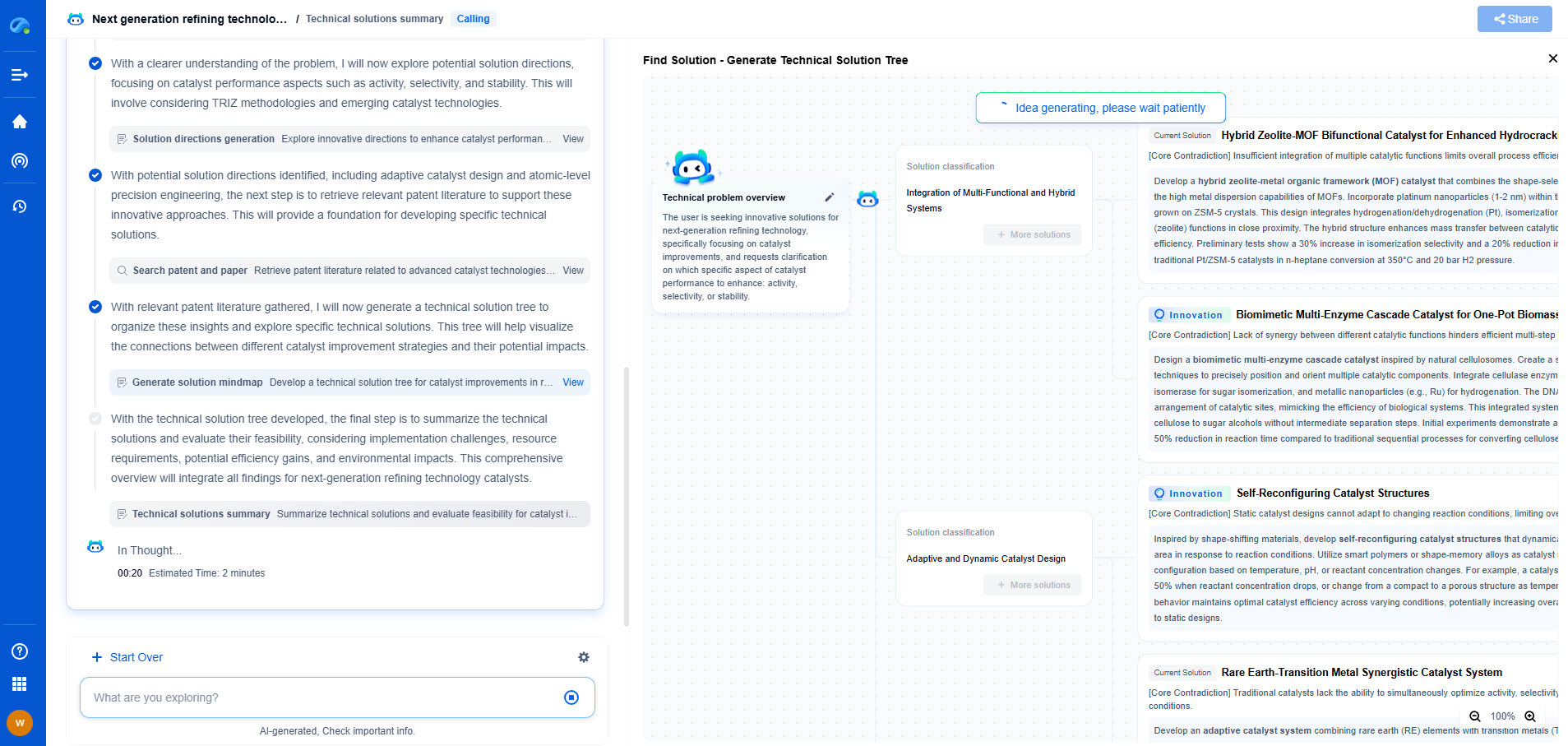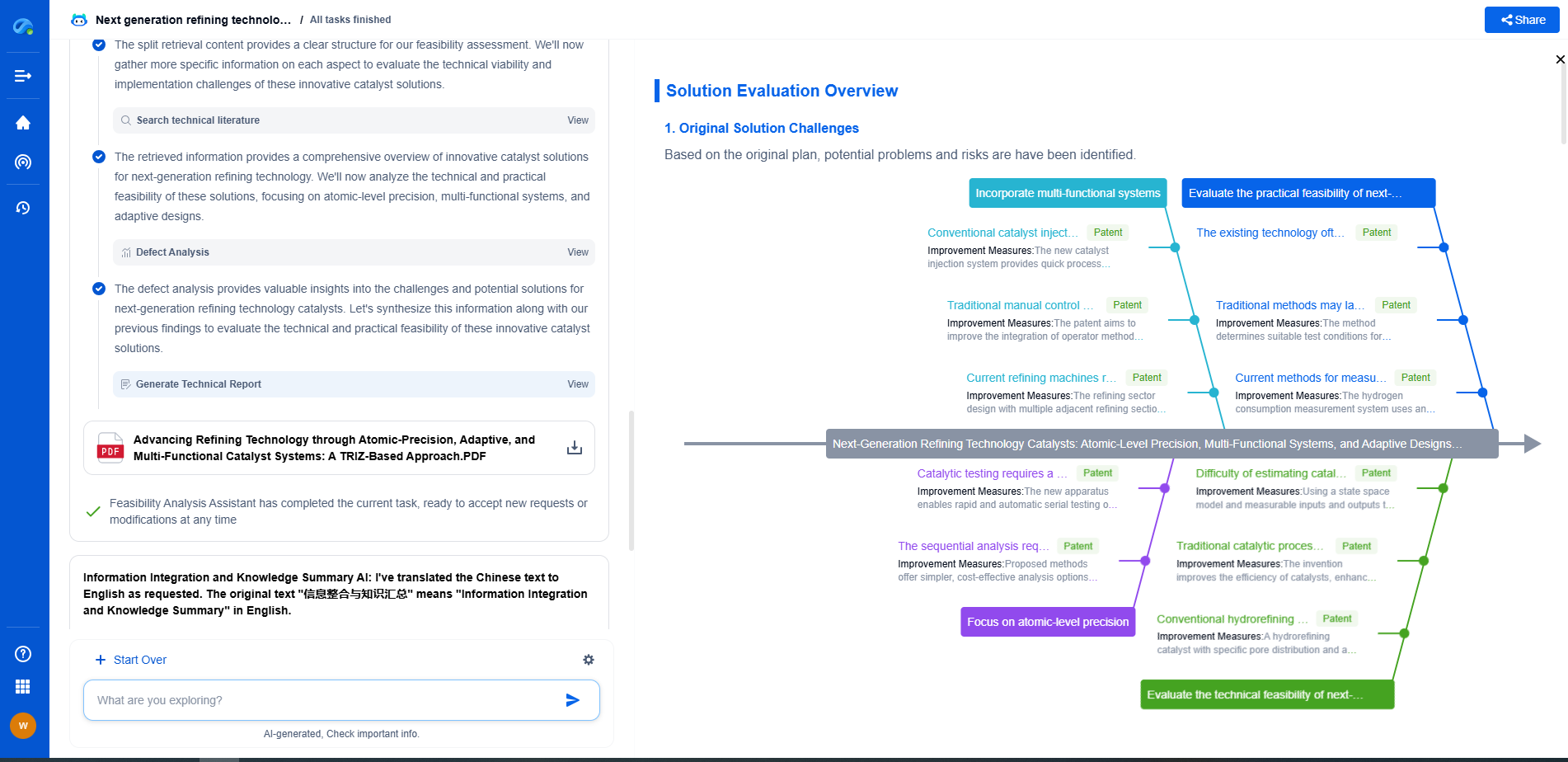What Is a Deadweight Tester and How Does It Calibrate Pressure Sensors?
JUL 14, 2025 |
A deadweight tester is an essential piece of equipment used in the calibration of pressure sensors and gauges. It operates on a simple yet precise principle: using known weights to apply a specific pressure to a fluid. This pressure is then balanced against the pressure exerted by a device under test (DUT), allowing for accurate calibration.
The core component of a deadweight tester is its piston-cylinder assembly. When a known mass is placed on the piston, it generates a force due to gravity. This force is then transmitted to the fluid within the cylinder, creating a precise pressure. By knowing the mass and the area of the piston, the pressure can be calculated with high accuracy using the formula: Pressure (P) = Force (F) / Area (A). This method capitalizes on the fact that the force exerted by the weights is consistent and highly reliable, making deadweight testers a gold standard in calibration.
Components and Functionality of a Deadweight Tester
A deadweight tester typically comprises a base, a piston-cylinder assembly, a set of calibrated weights, and a fluid reservoir. The base supports the assembly and holds the fluid reservoir. The piston-cylinder assembly is the heart of the device, crafted with precision to ensure minimal friction and high accuracy. The calibrated weights, often made of steel or another dense material, are carefully measured to provide precise force application.
To use a deadweight tester, the technician first ensures the system is free of air bubbles, as these can affect accuracy. The device under test is connected to the tester, and weights are added gradually. As the weights are applied, they exert pressure on the fluid, which is transmitted to the DUT. The technician observes the pressure reading on the DUT and adjusts as necessary until the DUT reading matches the pressure exerted by the tester.
How Deadweight Testers Calibrate Pressure Sensors
Calibrating pressure sensors with a deadweight tester is a meticulous process that ensures high accuracy and reliability. When calibrating, the sensor is subjected to known pressures generated by the tester. By comparing these known pressures with the readings from the sensor, any discrepancies can be identified and corrected.
The calibration process typically involves increasing and decreasing the pressure in steps, noting the sensor's response at each step. This helps in identifying any non-linearity or hysteresis in the sensor's performance. If the sensor shows deviations from the expected readings, adjustments can be made to its output to align with the known pressures. This iterative process continues until the sensor's readings are consistently accurate across the pressure range.
Advantages of Using Deadweight Testers
Deadweight testers are favored for their precision and reliability. Since they rely on the constants of mass and gravity, the measurements are highly accurate and repeatable. This makes them ideal for calibrating pressure sensors in critical applications, such as aerospace, manufacturing, and scientific research, where precision is paramount.
Another significant advantage is their traceability. The weights used in deadweight testers can be traced back to national standards, providing a clear and auditable calibration path. This traceability is vital in maintaining compliance with industry regulations and quality standards.
Limitations and Considerations
Despite their advantages, deadweight testers are not without limitations. They are typically large and cumbersome, making them less suitable for field use. Additionally, they require careful handling and maintenance to ensure continued accuracy, particularly regarding the cleanliness of the piston-cylinder assembly and weights.
Moreover, deadweight testers are generally limited to relatively low-pressure ranges. For extremely high-pressure applications, alternative methods such as hydraulic or electronic pressure calibrators may be more appropriate.
Conclusion
Deadweight testers remain a crucial tool in the precise calibration of pressure sensors, providing unmatched accuracy and reliability. Their straightforward operation, based on fundamental physical principles, ensures they continue to be a trusted resource in various industries. While they have some limitations, their benefits often outweigh the drawbacks, especially in environments where precision is critical. As technology advances, deadweight testers continue to evolve, incorporating new materials and techniques to enhance their capabilities and ensure their relevance in modern calibration needs.
From 5G NR to SDN and quantum-safe encryption, the digital communication landscape is evolving faster than ever. For R&D teams and IP professionals, tracking protocol shifts, understanding standards like 3GPP and IEEE 802, and monitoring the global patent race are now mission-critical.
Patsnap Eureka, our intelligent AI assistant built for R&D professionals in high-tech sectors, empowers you with real-time expert-level analysis, technology roadmap exploration, and strategic mapping of core patents—all within a seamless, user-friendly interface.
📡 Experience Patsnap Eureka today and unlock next-gen insights into digital communication infrastructure, before your competitors do.
- R&D
- Intellectual Property
- Life Sciences
- Materials
- Tech Scout
- Unparalleled Data Quality
- Higher Quality Content
- 60% Fewer Hallucinations
Browse by: Latest US Patents, China's latest patents, Technical Efficacy Thesaurus, Application Domain, Technology Topic, Popular Technical Reports.
© 2025 PatSnap. All rights reserved.Legal|Privacy policy|Modern Slavery Act Transparency Statement|Sitemap|About US| Contact US: help@patsnap.com

